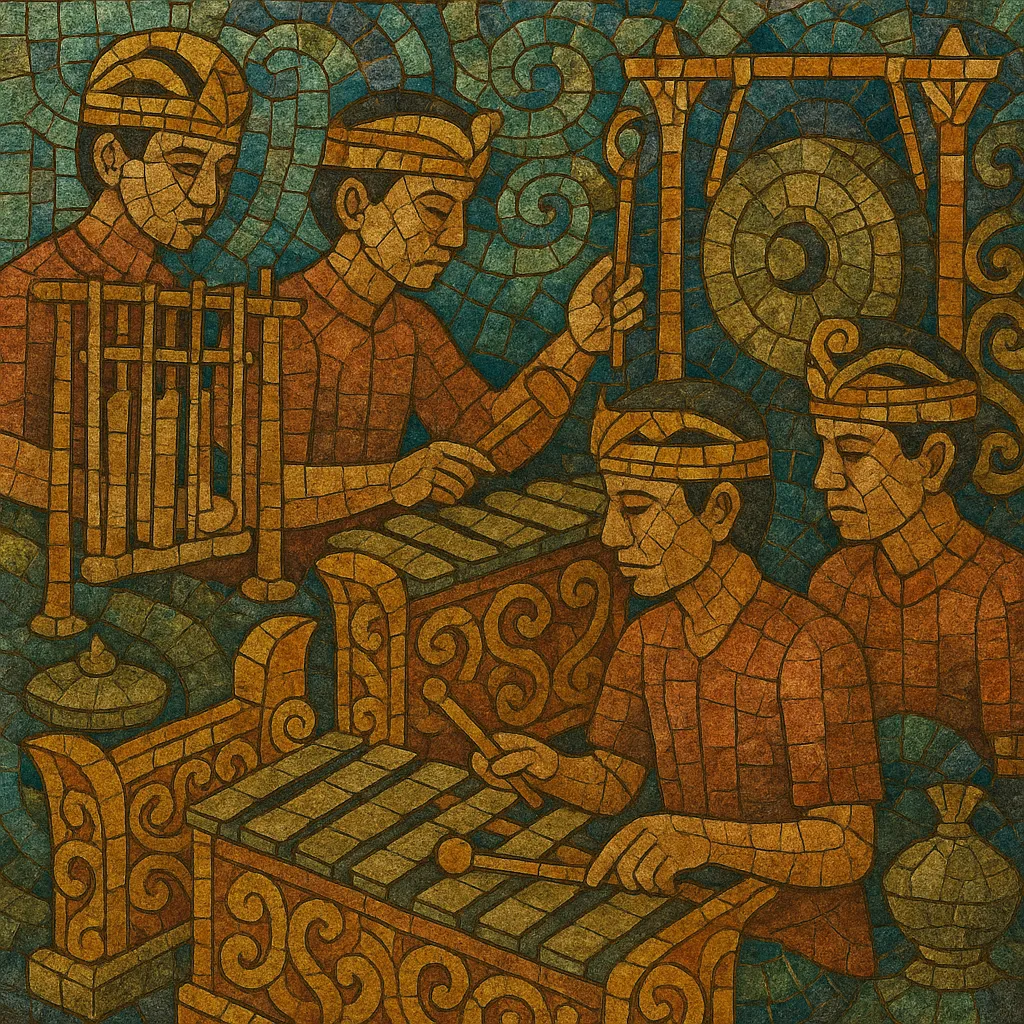Gamelan angklung is a Balinese ceremonial gamelan ensemble characterized by a four-tone sléndro tuning and compact, bright-sounding metallophones. Despite sharing a name with the Sundanese bamboo rattle instrument “angklung,” the Balinese gamelan angklung consists primarily of bronze-keyed instruments and gongs.
The ensemble’s music is cyclical, interlocking, and highly rhythmic, featuring swift figurations that weave around a core melody articulated by lower-pitched keys and punctuated by a colotomic gong cycle. It is deeply tied to temple ceremonies, processions, and rites of passage—especially funerary (ngaben) contexts—where its timbre, scale, and kinetic energy carry ritual significance.
Gamelan angklung likely took shape in Bali by the 1700s as a village- and temple-based ritual ensemble. It is tuned to a four-tone sléndro subset, a scale and sonority well suited to processional and outdoor ceremonial use. The name “angklung” here refers to the ensemble and its small, bright metallophones—not to the Sundanese bamboo shakers of West Java, with which it is often confused.
By the 19th century, gamelan angklung was common across Balinese communities for temple events, processions, and dances such as rejang and baris. Its portable size and penetrating timbre made it ideal for accompanying movement and ritual action in open-air settings. The repertoire centered on cyclic patterns, interlocking textures (kotekan), and clear colotomic punctuation by gongs.
With the rise of gamelan gong kebyar in the early 1900s, many village ensembles retuned or reconfigured instruments to the newer, more virtuosic style. Even so, angklung ensembles continued to hold their ceremonial niche—especially in funerary contexts—maintaining distinct four-tone repertoires and functions that kebyar did not replace.
From the late 20th century onward, Balinese arts schools and community sekaa (ensembles) helped preserve and revitalize gamelan angklung. Today, it remains active in temples and processions while also appearing on concert stages and in educational settings. New compositions and arrangements enrich its ritual core repertoire, and collaborations with dance and theater continue to highlight its ceremonial roots and vivid rhythmic language.


